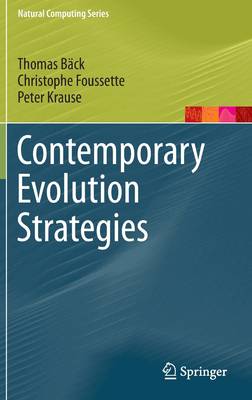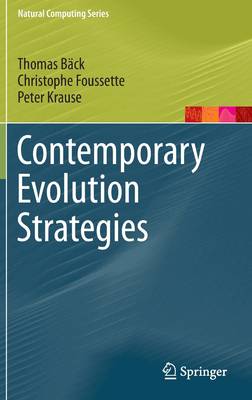
- Retrait gratuit dans votre magasin Club
- 7.000.000 titres dans notre catalogue
- Payer en toute sécurité
- Toujours un magasin près de chez vous
- Retrait gratuit dans votre magasin Club
- 7.000.0000 titres dans notre catalogue
- Payer en toute sécurité
- Toujours un magasin près de chez vous
Contemporary Evolution Strategies
With downloadable program code
Thomas Bäck, Christophe Foussette, Peter KrauseDescription
Evolution strategies have more than 50 years of history in the field of evolutionary computation. Since the early 1990s, many algorithmic variations of evolution strategies have been developed, characterized by the fact that they use the so-called derandomization concept for strategy parameter adaptation. Most importantly, the covariance matrix adaptation strategy (CMA-ES) and its successors are the key representatives of this group of contemporary evolution strategies.
This book provides an overview of the key algorithm developments between 1990 and 2012, including brief descriptions of the algorithms, a unified pseudocode representation of each algorithm, and program code which is available for download. In addition, a taxonomy of these algorithms is provided to clarify similarities and differences as well as historical relationships between the various instances of evolution strategies. Moreover, due to the authors' focus on industrial applications of nonlinear optimization, all algorithms are empirically compared on the so-called BBOB (Black-Box Optimization Benchmarking) test function suite, and ranked according to their performance. In contrast to classical academic comparisons, however, only a very small number of objective function evaluations is permitted. In particular, an extremely small number of evaluations, such as between one hundred and one thousand for high-dimensional functions, is considered. This is motivated by the fact that many industrial optimization tasks do not permit more than a few hundred evaluations. Our experiments suggest that evolution strategies are powerful nonlinear direct optimizers even for challenging industrial problems with a very small budget of function evaluations.
The book is suitable for academic and industrial researchers and practitioners.
Spécifications
Parties prenantes
- Auteur(s) :
- Editeur:
Contenu
- Nombre de pages :
- 90
- Langue:
- Anglais
- Collection :
Caractéristiques
- EAN:
- 9783642401367
- Date de parution :
- 11-10-13
- Format:
- Livre relié
- Format numérique:
- Genaaid
- Dimensions :
- 156 mm x 234 mm
- Poids :
- 326 g

Les avis
Nous publions uniquement les avis qui respectent les conditions requises. Consultez nos conditions pour les avis.






